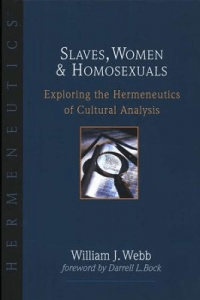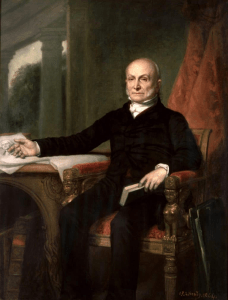The truth is, it doesn’t matter what a verse means to me, to you, or to anyone else. All that matters is what the verse means!
The worst extremes usually start with slight deviations.
Key point: To “rightly divide the word of truth” we need to avoid faulty methods of biblical interpretation and use a reliable one. This post is about avoiding an approach with several major flaws.
I began the 29th post I published on Word Foundations this way.
A young man with limited experience but with a great deal of drive and physical strength aspired to be a woodcutter. He went to a local timber yard and applied for a job. The pay was adequate, and the boss seemed to be reasonable and fair-minded; so the man was very pleased when he was hired. The first day he cut down 18 trees. “Great!” said the supervisor, “Keep it up and you’ll do just fine.”
The second day the man worked equally hard but managed to bring in just 15 trees. The third day he gave everything he had but brought in only 10 trees. “I don’t understand what’s happening,” he said to his boss. I’ve been working harder than ever, but somehow I’m cutting down fewer and fewer trees. Am I losing my strength that quickly?”
“When did you last sharpen your axe?” asked the supervisor.
“Sharpen my axe?” replied the new woodcutter. “Why, I’ve been so busy cutting down trees I haven’t had time to sharpen my axe!”

All too often, Christians and evangelical churches are like that woodcutter. Periodically, we need to “sharpen our axe” in order to effectively confront the increasingly secular culture in which we live. Of course, we aren’t speaking here of wielding a literal handle and blade but of having an accurate awareness of how non-Christian people think so we can challenge their most basic assumptions. We need to be like “the sons of Issachar who had understanding of the times, to know what Israel ought to do” (1 Chron. 12:32). As Abraham Lincoln once said, “Give me six hours to chop down a tree and I will spend the first four sharpening the axe.”
Last time we considered the dangers of standpoint epistemology. On the heels of writing that post, I became familiar with yet another erroneous means by which some evangelicals now are approaching biblical interpretation—trajectory hermeneutics (TH). Now, individuals using this approach may not think they’re manipulating the text, but in a variety of cases, TH literally sets the stage for the individual using it to conclude the Scripture is 1) saying something it absolutely does not say or 2) not saying something it clearly declares.

Satan is happy if he can get people to deny the Bible is true, but I guarantee you he’s overjoyed when he can get people who uphold the Bible as God’s inerrant Word—especially Christian leaders—to misinterpret it and to claim it teaches something it doesn’t, or to claim it doesn’t teach something it does.
This is why biblical hermeneutics are so important. This is why Christians—Bible teachers and Bible students alike—need to make sure that they are going after the “trees” of God’s truth with the sharp ax of a reliable and trustworthy approach to biblical interpretation. Gathering them with a blunt ax (or an unsharpened chainsaw) will result in mangled and misshapen trees, or, in the language of our illustration, incorrect interpretations of Scripture.
Satan is happy if he can get people to deny the Bible is true, but I guarantee you he’s overjoyed when he can get people who uphold the Bible as God’s inerrant Word—especially Christian leaders—to misinterpret it and to claim it teaches something it doesn’t, or to claim it doesn’t teach something it does.
For now, let’s give attention to an approach that has some major recognizable flaws so, when we see it, we can understand the problems and steer clear of it.
Evidence of Trajectory Hermeneutics

On Wednesday, July 17, 2019, Tim Challies, a Christian blogger and leader who has been respected in evangelical circles, responded to a series of questions posed by the members of an audience at Antioch Bible Church in Roodepoort, South Africa. A video of the session was posted on You Tube, but after it went viral (likely primarily because of the following exchange) it was taken down.
Truthsource.org carried an article about the exchange.
AD Robles, a video blogger who frequently challenges members of the establishment wing of evangelicalism, has been forceful and direct in the videos he has released in response. All three (here, here, and here) are excellent in terms of presenting the truth. AD has indicated more are to come. This clip comes from the first of the three, which he released on March 9, 2020, just after the Q and A video went viral.

What? Still Working it Out?
Now, what does Tim Challies’s answer have to do with biblical interpretation, or with what we have referred to as trajectory hermeneutics in particular? Consider carefully the first few sentences in Tim’s answer.
Yeah. So this is another one of those issues that we as a church are working out, and I think that’s okay. We’re, if you look across the sweep of 2,000 years of church history, this whole idea of “same-sex attraction” or “gay Christian” or all these different terms that have come up, these are very, very new when measured against the history of Christianity. So I also think it’s unrealistic to expect that we’ll solve it immediately.
And so, within Christianity we see a wide spectrum of professed Christians who are saying, um, “That’s absolutely, utterly wrong in every way; even the desire or tendency toward homosexuality is itself sinful.” Other people say, “The tendency or temptation itself is not sinful; it’s only sinful if you act on it.” Um, I, I think we’re giving this time and on both a practical and theological level really working that out.
Don’t you see why AD responded the way he did? This actually isn’t an issue that the church should still be “working out,” but one on which the Bible is crystal clear. The church already should be actively declaring what the Bible says about it in no uncertain terms. Anyone who is honest with all of the texts in the Bible that mention homosexuality knows this (also go here).
Trajectory Hermeneutics

Trajectory hermeneutics, an approach to biblical interpretation that sometimes is called “redemptive movement hermeneutics” is a concept developed by theologian William J. Webb. He presents his ideas in his 2001 book Slaves, Women, and Homosexuals. In the book, Webb “proposes a trajectory proposes a trajectory hermeneutic on the issues of slaves and women.”
 The Bible does not speak directly against slavery as an institution, notes Webb; nor does it seek to undo the ways in which cultures degraded women at the time the biblical texts were written. Still, says Webb, we as Christians can look at and decipher the direction in which Scripture was headed with regard to these groups of people. We can “see a trajectory in time that plays out in our present understanding, even though the NT had not made it to this point yet.” Noting that direction or trajectory, we as Christians have a responsibility, says TH, to “take up that ball and carry it to its finality.”
The Bible does not speak directly against slavery as an institution, notes Webb; nor does it seek to undo the ways in which cultures degraded women at the time the biblical texts were written. Still, says Webb, we as Christians can look at and decipher the direction in which Scripture was headed with regard to these groups of people. We can “see a trajectory in time that plays out in our present understanding, even though the NT had not made it to this point yet.” Noting that direction or trajectory, we as Christians have a responsibility, says TH, to “take up that ball and carry it to its finality.”
An article on trajectory hermeneutics at gotquestions.org, says this:
The issue of slavery is often used to illustrate trajectory hermeneutics or redemptive-movement hermeneutics. In the first parts of Scripture, slavery was accepted as a normal part of culture, even among the Hebrews. However, the Mosaic Law limited what could be done to slaves and provided for treatment that was humane, compared to what the surrounding cultures allowed. Such rules show the “trajectory” that God intended to take regarding slavery. In the New Testament, masters were admonished to treat their slaves well (Colossians 4:1), and Paul referred to a slave as his brother in Christ (Philemon 1:16). This continues the “trajectory” of redemption. According to trajectory hermeneutics, we can follow the path that Scripture naturally set us on and conclude that God desired the emancipation of slaves. While no Scripture exists that abolishes slavery outright, we can infer from the “redemptive movement” within Scripture that God’s will was that slavery end, to the betterment of society. By extending the trajectory begun in Scripture, we can arrive at a logical conclusion.

The primary focus of trajectory hermeneutics, therefore, is the standard of ethics adopted by modern societies and cultures. It seeks to address where God wanted cultures to go with regard to their ethics in times and places beyond those in which the Scriptures originally were written. Redemptive movement hermeneutics therefore
attempts to provide answers for those modern issues that the Bible does not directly address by finding the “redemptive spirit” behind the actual text of Scripture and “working out” or developing the ethics contained in seed form in the Bible. Other issues tackled by proponents of trajectory hermeneutics include homosexuality and the role of women in ministry.
One problem with this is that it implies that statements the Bible makes about related subjects in the biblical era are insufficient for us as we seek to apply biblical teachings today. This system of hermeneutics, by definition, tells us we must speculate. It goes beyond what Scripture actually says, and it sets the stage for interpreters to go beyond the biblical principles that underlie what it says.
Advocates of this interpretive system contend it does not conflict with the grammatical-historical approach (also go here and here) the church has used for many centuries to interpret the Bible. Even so, it effectively gives interpreters “permission” to take liberties that push against the Bible’s authority by essentially giving them—the interpreters—the final say in where the Bible meant to take a particular issue or ethic.
We are to “take…that ball [the Scripture has supposedly tossed in a certain direction] and carry it it to its finality,” says the article at Bible.org in its description of trajectory theology, but then it warns that the questions that arise from this assumption highlight a great many potential problems and dangers, one to which we have alluded already.
-
-
- What is the finality to which we are to take it?
- How do we know that the NT example is not that finality?
- Who has the authority to make these decisions?
-
Theologian Wayne Grudem writes of Webb’s book, and consequently of the approach he upholds,
I believe [Webb’s work] is a deeply flawed book that fundamentally contradicts the Reformation principle of sola Scriptura because it nullifies in principle the moral authority of the entire NT and replaces it with the moral authority of a “better ethic,” an ethic that Webb claims to be able to discover through a complex hermeneutical process entirely foreign to the way God intended the Bible to be read, understood, believed, and obeyed.
What About Slavery?

In a sense, the argument for a redemptive-movement system for biblical interpretation has an appeal with regard to the issue of slavery. If we don’t use a trajectory hermeneutic to explain the biblical and theological rationale for eliminating the institution of slavery, how then can we arrive at the conclusion that eliminating slavey is a biblical position?

The short answer is that we don’t have to depart from what the Bible actually says to reach this conclusion. Moreover, we readily can uphold biblical principles underlying what the Bible says to reach it. God made people in His own image. While He permitted slavery among the Hebrews in the Old Testament and thereby authorized it at that period of time and in that historical context by regulating it, the Lord also made it clear He abhors the mistreatment of members of his highest creation—humanity. Moreover, in the New Testament, Paul presented guidelines for both masters and their slaves that reinforce God’s directives about how human beings, and especially Christians, are to treat one another. None of these principles stands in opposition to the notion that society and its citizens are better off without slavery. Thus, abolition of slavery is a thoroughly Christian and a thoroughly biblical position. Moreover, the biblical recognitions in these and other areas that Christians have come to uphold demonstrate conclusively the transformative influence of Christianity through the centuries, as believers have sought to apply biblical principles both individual and corporately in every arena of life. Consider this statement about women, slavery, and the impact of Christianity through the centuries, which we made in a previous post.
The Dangers of Using Trajectory Hermeneutics with Regard to the Issue of Homosexuality
The Wikipedia article on biblical hermeneutics says this about the redemptive movement approach as it relates to its architect, William Webb.
While for Webb the use of this hermeneutic moves to highlight the progressive liberation of women and slaves from oppressive male/bourgeois dominance, the prohibition of homosexual acts consistently moves in a more conservative manner than that of the surrounding Ancient Near East or Graeco-Roman societies.…Historically, the biblical witness has become progressively more stringent in its views of homosexual practice and the implications of this are not commented upon by Webb.
Webb may not have commented on these implications when he wrote his book, but the problem with Webb’s approach is quite clear in Tim Challies answer about repenting of same-sex attraction. Consider again his first few statements, and note the words I’ve emphasized in italics.
Yeah. So this is another one of those issues that we as a church are working out, and I think that’s okay. We’re, if you look across the sweep of 2,000 years of church history, this whole idea of “same-sex attraction” or “gay Christian” or all these different terms that have come up, these are very, very new when measured against the history of Christianity. So I also think it’s unrealistic to expect that we’ll solve it immediately.
It seems to me this isn’t unlike saying, “We in the church are still trying to figure out where God wants to take the issue of same-sex attraction and homosexuality, and that’s okay. We’ll get there, but I’m not going to speak forcefully about it now.” Yet God made Himself very clear about same-sex attraction and homosexuality. We don’t need to speculate or “work out” anything about it.
While we might be drawn to William Webb’s interpretive ideas when we hear his arguments regarding the Bible and slavery, the Bible’s bedrock standard on homosexuality shows us how faulty trajectory theology really is. God has spoken about this issue, and He will not move. AD Robles explains.
Can we be compassionate and still declare the truth? Yes! In fact, we must! But let’s not employ any method of biblical interpretation that causes us, or even tempts us, to reach a conclusion on any issue different from the conclusions God presents in His own Word.
Remember, one of Satan’s most effective strategies is getting Christians, especially Christian leaders, to use tools of biblical interpretation that actually misinterpret the Bible. In the language of the illustration we used at the beginning, using a dull ax to go after God’s truth actually mangles and manipulates it.

Be sure to use the sharp ax of a reliable method of biblical interpretation, such as the grammatical historical method.
Here is an excellent article by my friend Ronnie Rogers, a pastor, on the grammatical-historical method of biblical interpretation.
Related article at www.wordfoundations.com:
Five Things I learned from Jon Harris’s Conversation with Bill Roach About Standpoint Epistemology
This article addresses another dangerous approach to biblical interpretation.
Copyright © 2020 by B. Nathaniel Sullivan. All rights reserved.
For more information about a the grammatical historical approach to interpreting Scripture, go here, here, and here.
Unless otherwise indicated, Scripture has been taken from the New King James Version®. Copyright © 1982 by Thomas Nelson, Inc. Used by permission. All rights reserved.
Originally published on: Mar 14, 2020 at 14:19
